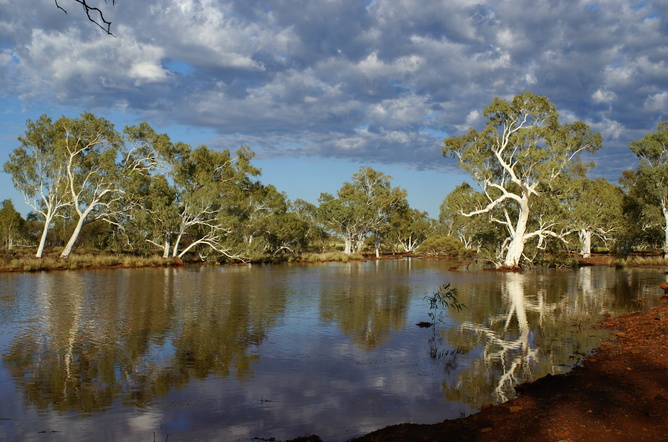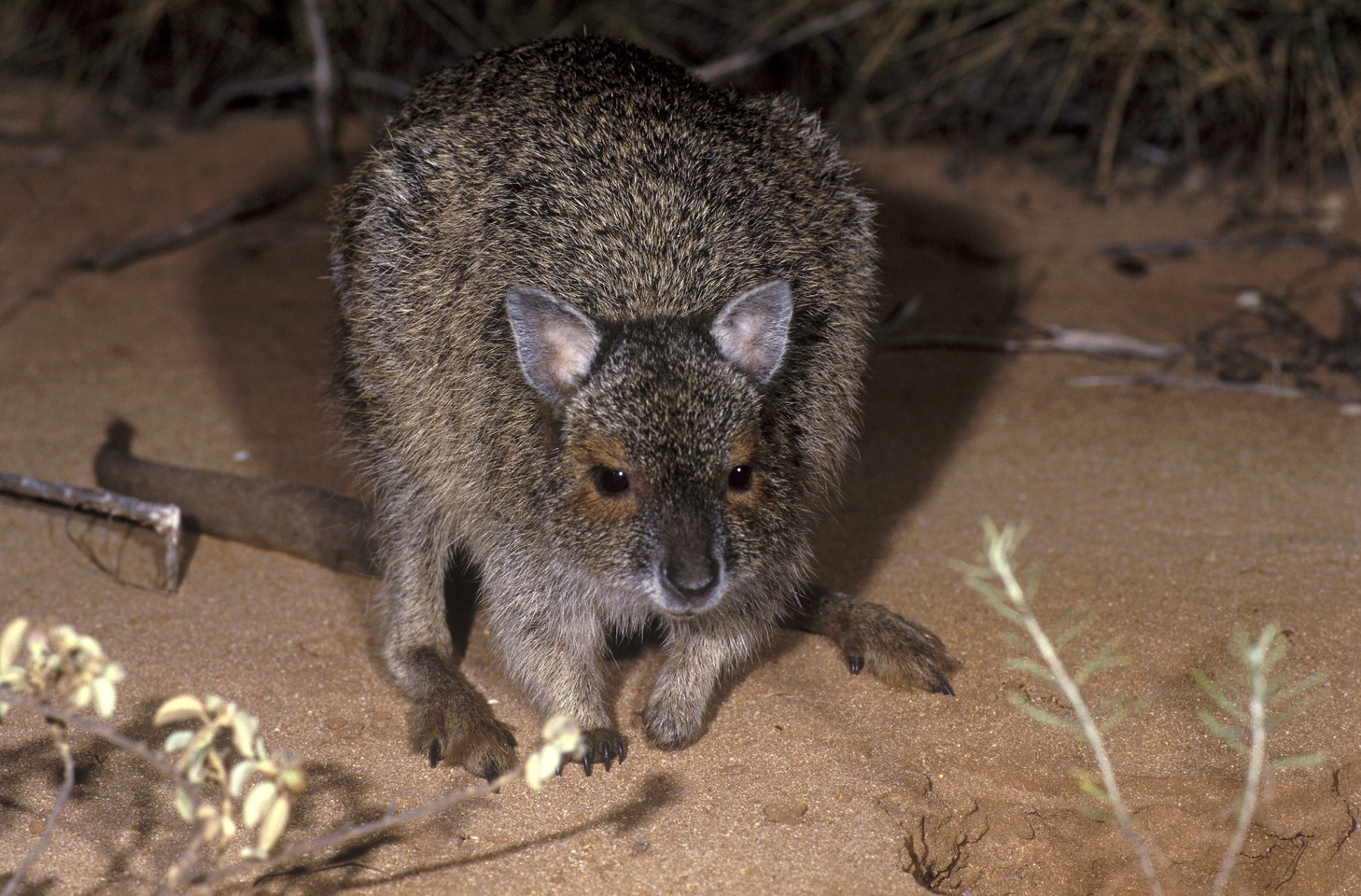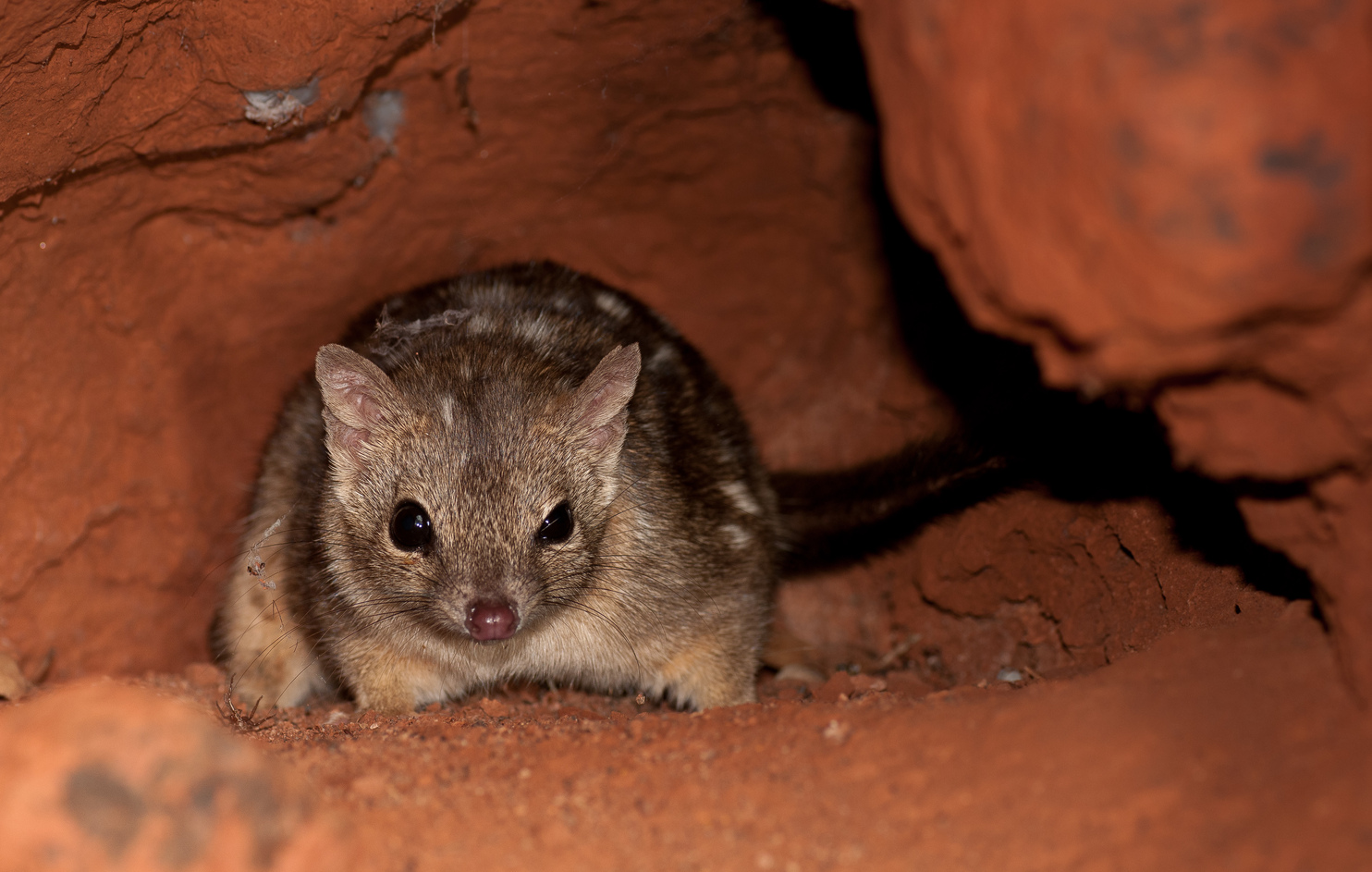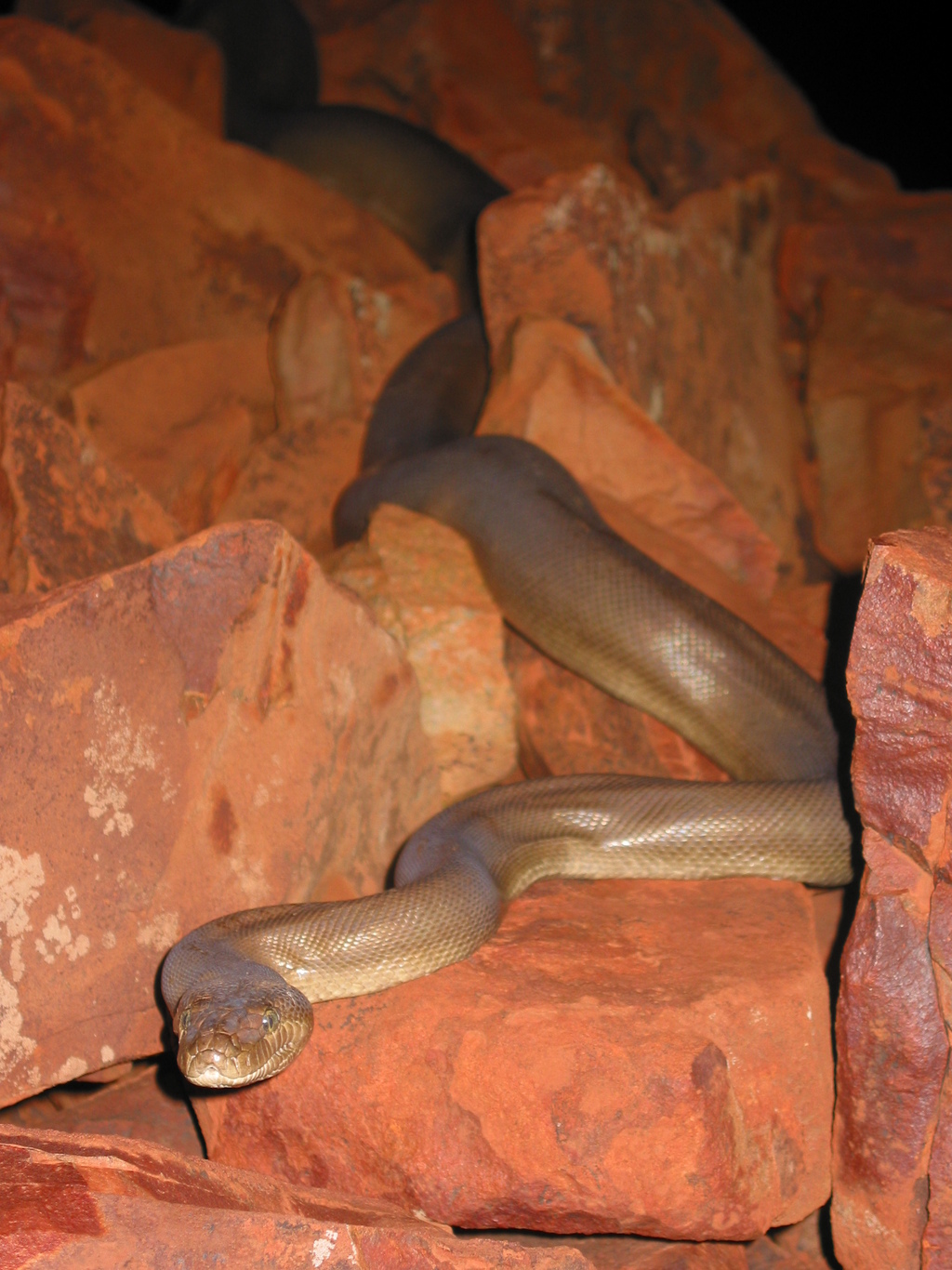
The Pilbara: lots more than just mining. Image: Leanne Corker/supplied
By Josie Carwardine, Research Scientist; Andrew Reeson, Behavioural Economist; Belinda Walters, Research Support Officer; Iadine Chadès, Research Scientist; Sam Nichol, Postdoctoral Researcher; Tara Martin, Senior Research Scientist; Jennifer Firn, Senior Lecturer at Queensland University of Technology and Stephen van Leeuwen, Adjunct Associate Professor at University of Western Australia
Across northern Australia, small native mammals are disappearing at an alarming rate, and other animals and plants are also in decline. One major problem is finding the best way to use funds to manage threats to disappearing plants and animals. In the Pilbara region of Western Australia, 15% of the original mammal species have already disappeared, and more species stand to go if growing threats are left unchecked.
But our recent work in the Pilbara shows that this doesn’t have to be the case. All of the region’s most threatened species could be given a good chance of survival for less than A$5 million a year, largely through investing in management of key threats across the region, such as introduced species and changed fire regimes.
Our approach can be applied to other regions, plants and animals, and suggests that with good decision-making it will be possible to save species without breaking the bank.
Not just desert and mining
The Pilbara is roughly the size of Spain and generates 6% of Australia’s gross domestic product through mining. Since 2001, the region’s population has grown 70% to almost 50,000.
But the region is also a national hotspot for unique plants and animals. Iconic species of the region include the Pilbara olive python, the Millstream fan-palm, and the Pilbara leaf-nosed bat. The region is also a global hotspot for subterranean fauna, including stygofauna and troglofauna invertebrates which live in underground caves, vugs and aquifers.
Altogether, the Pilbara is home to at least 4,000 species of plants and animals – many of which, especially reptiles, plants and invertebrates, are found nowhere else on earth. As many as 160 species that occur in the Pilbara, including marine and migratory species, are listed on Australia’s Environmental Protection and Biodiversity Conservation Act.

Greater bilby. Image: Kanyana Wildlife Rehab Centre/supplied
The regular discovery of new species in the Pilbara suggests that there is still a lot we don’t know about the region’s plants and animals. For example, 12 new Acacia species were described in 2008, two new gecko species discovered in 2012, and the number of species of stygofauna has increased from about 40 species known in 2002 to over 350 species in 2012, with experts estimating that this might only be half of the total number that are actually present.
Altogether, this unique suite of species is under threat, mostly due to changed fire regimes, invasion, predation and competition from pests and weeds, and infrastructure development and clearing associated with the mining and pastoral industries.
We worked with dozens of experts in ecology and management of the Pilbara to look at 53 of region’s most threatened species, which can be thought of as “conservation significant species”. The experts estimated that 13 (or 25%) of these species are likely to be functionally extinct in the Pilbara within 20 years without management intervention. This means they have less than a 50% chance of persisting there in the medium-to-long term.
The species most at risk include high-profile mammals such as the greater bilby and spectacled hare-wallaby, and plants found only in the Pilbara, such as the De Grey saltbush and Muccan fuchsia.

Spectacled hare wallaby. Image: Jiri Lochman/supplied
Saving species, at the least cost
There are lots of approaches to try and find out the “best” ways to conserve threatened species. For many species in the Pilbara and elsewhere, scientists and conservation managers do have a good idea about what is required to reduce major threats.
But one piece of the puzzle is often missing — cost. How do we know how much saving a species will cost, what are we likely to get for our money if we invest in a set of threat management strategies, and if we don’t have funds to invest in all of the strategies, which should we choose?
One way of getting the answers is through cost-effectiveness analysis, which simply involves comparing the benefit to cost ratio of alternative options, where the benefit is measured in something other than dollar terms.
Let’s take managing introduced herbivores as an example of a conservation strategy. We defined “benefit” as how much better the chances were of species surviving if introduced herbivores were removed, compared with if they were not. For example, the estimated chances of survival for the endangered Night parrot in the Pilbara went from 15% without threat management, up to 45% if feral ungulates were managed. To figure out the total benefit of managing feral ungulates, we add up all the individual species benefits.
We looked at 17 different conservation strategies, including managing fire, grazing and introduced predators. We also looked at the cost of each strategy and how likely it is that it would work. Ecological experts then estimated the improvements in species survival for each species by each strategy.

Northern quoll. Image: Henry Cook/supplied
What we found
Using our cost-effectiveness analysis we drew several strong conclusions.
First, we found that managing feral ungulates such as pigs, donkeys, camels and unmanaged cattle was the most effective conservation strategy — it offered the greatest impact on species survival for each dollar spent. This was followed by creating predator-proof sanctuaries, and managing feral cats. Each of these top-ranking strategies costs under $1 million each year.
The total cost of implementing all 17 strategies for 20 years was A$348 million, or A$17.5 million each year. But assuming we wouldn’t have all this money, we found that we could give all of the “conservation-significant” species at least a 50% chance of survival by funding domestic herbivore management, fire management, and establishing predator-proof sanctuaries (including island translocations).
The total cost of doing this over the next 20 years would be A$95.2 million, or A$4.76 million each year. So that’s about two species likely to be saved for each million dollars spent, although some extra funds would be needed for things like information sharing and monitoring.

Pilbara olive python. Image: Michael Tutt/supplied
If we want to be more certain about saving species, we could provide most species with a 75% chance of survival for an extra $4 million annually – making that a total of $9 million each year. This means that it costs a bit extra to have a more certain outcome of saving species.
But benefits don’t stop just at saving species. The recommended management actions have other benefits because they involve broader improvements to the Pilbara’s natural systems and peoples livelihoods. These benefits include job creation; improved carbon sequestration, soil health, water quality, and drought tolerance; and improved resilience to changes in climate and other threatening processes.
Conservation alongside development
The expansion of cities, towns, and industries continues to encroach on native plants, animals and the ecosystems they live in. More than ever, the conservation of native plants and animals can only be achieved alongside development that is considered important for society.
Until now, there has been no region-wide assessment for helping decision-makers choose what to do to get the biggest bang for our conservation buck in the Pilbara – or anywhere else in Australia except the Kimberley.
Protecting threatened species requires rational approaches for deciding how to best spend the resources available for protecting threatened species. The next step is effective investment of resources to manage key threats, often while development continues.
While rapid development in regions like the Pilbara poses significant threats to native plants and animals, it also provides impetus and potentially the resources to deliver an enduring outcome for biodiversity and sustainable development.
This collaborative CSIRO-led project was supported by Atlas Iron (financial support) and the WA Department of Parks and Wildlife (in kind support). The authors acknowledge the 49 expert participants for their valuable input.
This article was originally published on The Conversation. Read the original article.


24th November 2014 at 6:29 pm
Great to see these efforts being made with such iconic Australian species. I sincerely hope you are successful with this! Would hate to loose an animal such as the Bilby
3rd June 2014 at 12:55 am
Dear CSIRO, firstly what a great blog and I really hope what you have outlined can and will happen.
I have a question on the topic.. when my darling darling cat is in the happy hunting ground in the sky 🙁 – may i please replace him with a spotted-tail quoll?
Why is it australian native animals are so much of a legal drama to have as domestic, or partly domestic animals? I completely understand some of us can be terrible owners, there are welfare concerns and there is stuff about ethics eg ‘farming’ and associated regulation problems but is it time we start to weigh this up against the loss of our wild species? Considering how much fish and meat stock cats and dogs consume and how people are more introverted and in love with their pets these days. If this demand shifted towards the development of insect and native veg farms to feed our new native pet market etc couldn’t this country become a much more well-functioning and self-sustaining place? With plenty of food and environmental resources building up for natives species as well.
Don’t we as people need to get a bit back to nature anyway – and learn the risks associated with interacting with our wildlife and to respect their requirements?
Wouldn’t crowd-sourcing native animal food sources and other resources via encouraging a well managed native animal ‘market’ in australia work? Particularly when funding for the environment and for fantastic solutions like those you have blogged about are unreliable and dwindling with each swing in government. We need some way to save and put a monetary value our ecosystems and wildlife and this could do both.
I’d really love some perspective on this and reminding of why this is an avenue that we really do not want to explore.. Thank you : D
5th June 2014 at 2:54 pm
Thanks for such a great comment/question Sharon. Here’s what our scientists have to say:
Thanks for your question – unfortunately there isn’t a simple answer, which is why RIRDC conducted a feasibility study in 2010 and ECOS published an article on the same topic in 2011 (see links below). However, after talking to several of our colleagues a few common themes come up: (i) allowing native mammals to be kept as pets could result in deliberate capture of wild animals for the market, potentially reducing population viability, (ii) dumping of unwanted pets (which, unfortunately, is common with everything from cats to goldfish) could introduce human-habituated individuals back into the wild that may pose a threat to themselves, others of their species or humans, may introduce diseases, or may introduce species into areas outside their native range, (iii) from a conservation perspective, it could be argued that saving an individual species by taking it into captivity is of less value than conserving a habitat or landscape where it could thrive naturally, and (iv) legislation is currently very restrictive of keeping native mammals in captivity, and policy makers tend to be quite risk-averse, so unless the evidence becomes overwhelming that keeping mammals as pets is a positive there is unlikely to be a change.
https://rirdc.infoservices.com.au/items/10-072
http://www.ecosmagazine.com/paper/EC10101.htm
http://www.environment.nsw.gov.au/wildlifelicences/cantkeepnativemammals.htm
thanks
Carol
6th June 2014 at 11:13 pm
Hi Carol, Thank you for taking the time to respond. That is such a good reply. I really appreciate the reasons and the excellent links. Sharon